Art can be strange, thought-provoking, and sometimes downright odd. Some artworks defy conventional norms, challenging our perceptions and stirring debate. Here are some of the oddest artworks ever created that have left a mark on the art world.
Marcel Duchamp’s “Fountain”
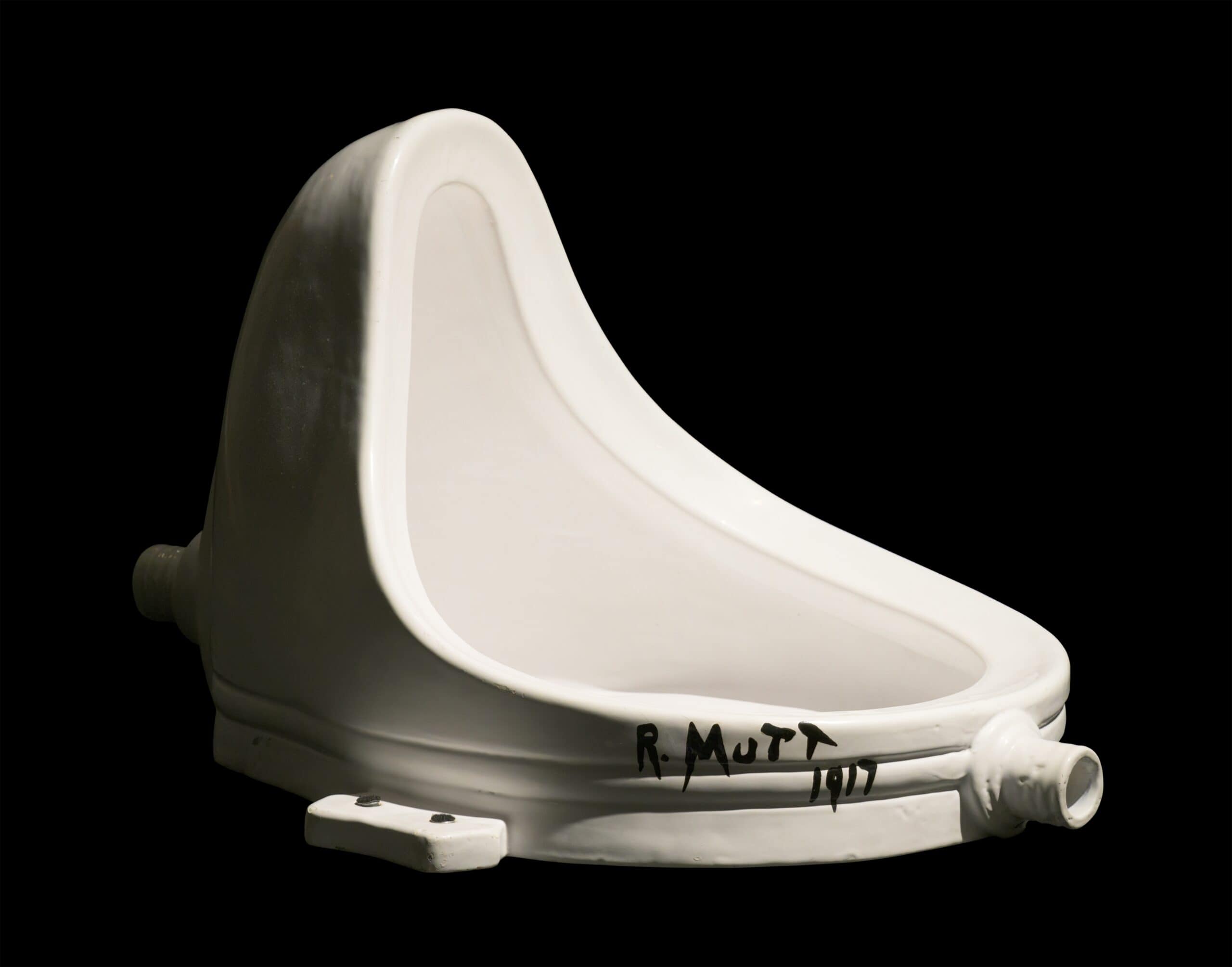
Marcel Duchamp’s “Fountain” was created in 1917. It is a porcelain urinal, signed “R. Mutt” and turned on its back. This piece challenged traditional notions of what art could be and sparked debates about the definition of art. Duchamp’s “Fountain” is considered one of the most influential artworks of the 20th century. It was rejected by the exhibition it was submitted to, but it later gained recognition as a pivotal work in the Dada movement. Its simplicity and provocative nature continue to inspire and perplex artists and viewers alike.
Salvador Dalí’s “Lobster Telephone”
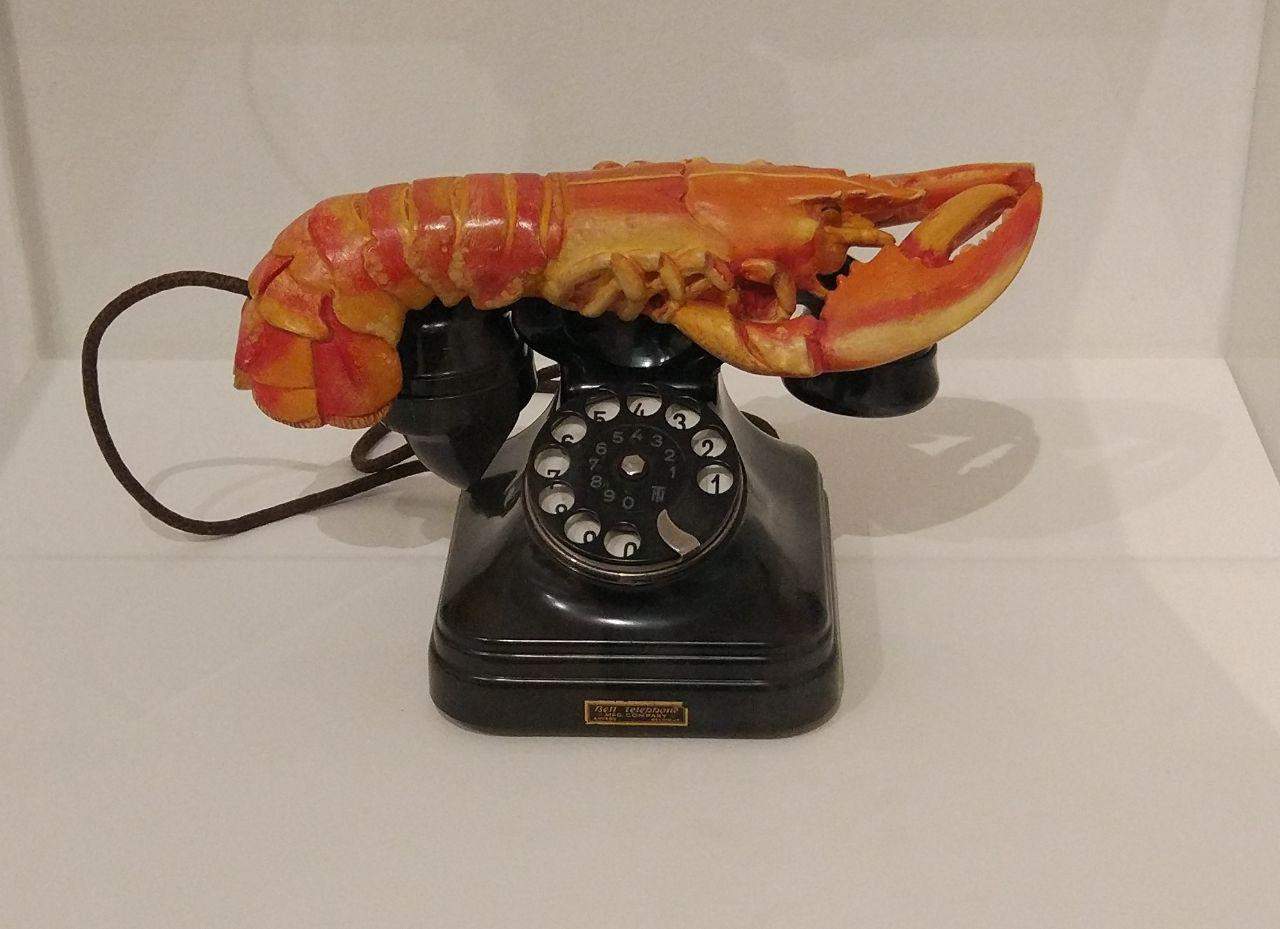
Salvador Dalí created the “Lobster Telephone” in 1936. This surrealist piece combines a real lobster with a functioning telephone, merging two unrelated objects in an unexpected way. The work reflects Dalí’s fascination with the subconscious and irrational. “Lobster Telephone” is both playful and unsettling. Dalí saw lobsters as symbols of sexuality, and the telephone’s functionality adds to the absurdity. This artwork exemplifies Dalí’s unique approach to surrealism, blending dreamlike imagery with everyday items.
Chris Ofili’s “The Holy Virgin Mary”
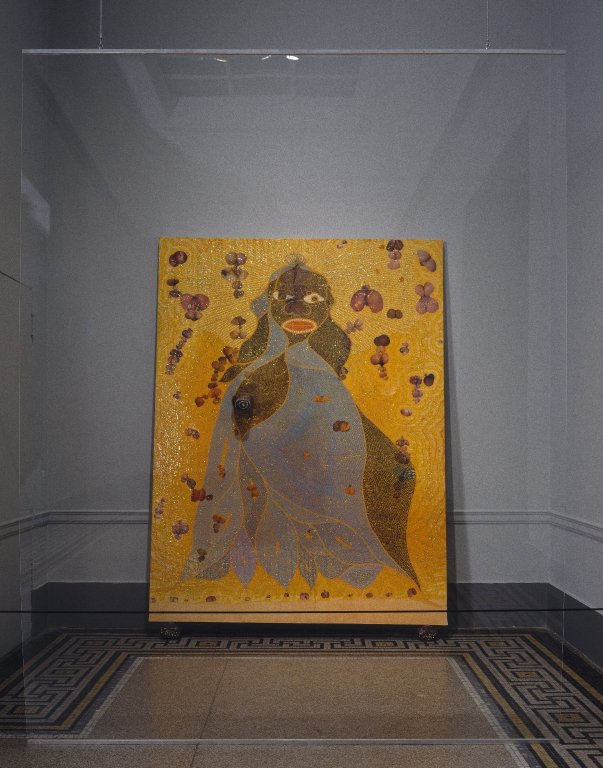
Chris Ofili’s “The Holy Virgin Mary” was created in 1996. This controversial artwork features a black Madonna surrounded by images of genitalia and elephant dung. Ofili used these materials to comment on cultural and religious identity. “The Holy Virgin Mary” sparked outrage and protests, especially from religious communities. Despite the controversy, it was praised for its boldness and originality. Ofili’s use of unconventional materials challenged traditional artistic methods and highlighted issues of race and representation.
Damien Hirst’s “The Physical Impossibility of Death in the Mind of Someone Living”
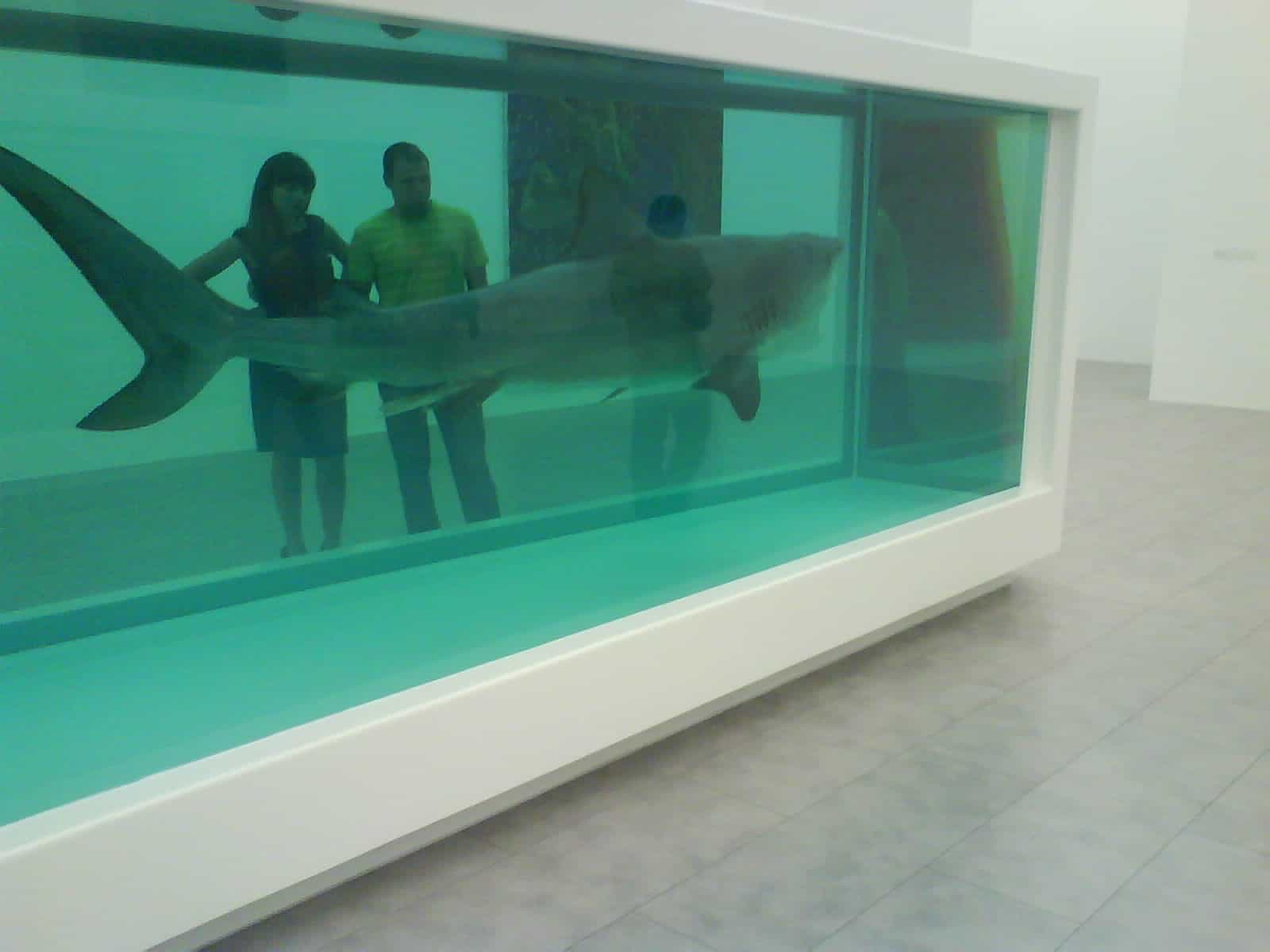
Damien Hirst created “The Physical Impossibility of Death in the Mind of Someone Living” in 1991. It features a tiger shark preserved in formaldehyde, housed in a glass tank. This piece explores themes of death and preservation. Hirst’s artwork is both captivating and disturbing. The shark’s lifelike appearance contrasts with its lifeless state, provoking thoughts about mortality. The piece became a symbol of contemporary art’s shock value and Hirst’s fascination with life and death.
Yayoi Kusama’s “Infinity Mirrored Room – The Souls of Millions of Light Years Away”

Yayoi Kusama created “Infinity Mirrored Room – The Souls of Millions of Light Years Away” in 2013. This installation features a room lined with mirrors and filled with LED lights, creating an illusion of endless space. Kusama’s “Infinity Mirrored Room” offers a mesmerizing experience. Visitors feel immersed in an infinite universe of light and reflection. This piece highlights Kusama’s exploration of infinite space and her unique ability to create immersive environments.
Piero Manzoni’s “Artist’s Shit”
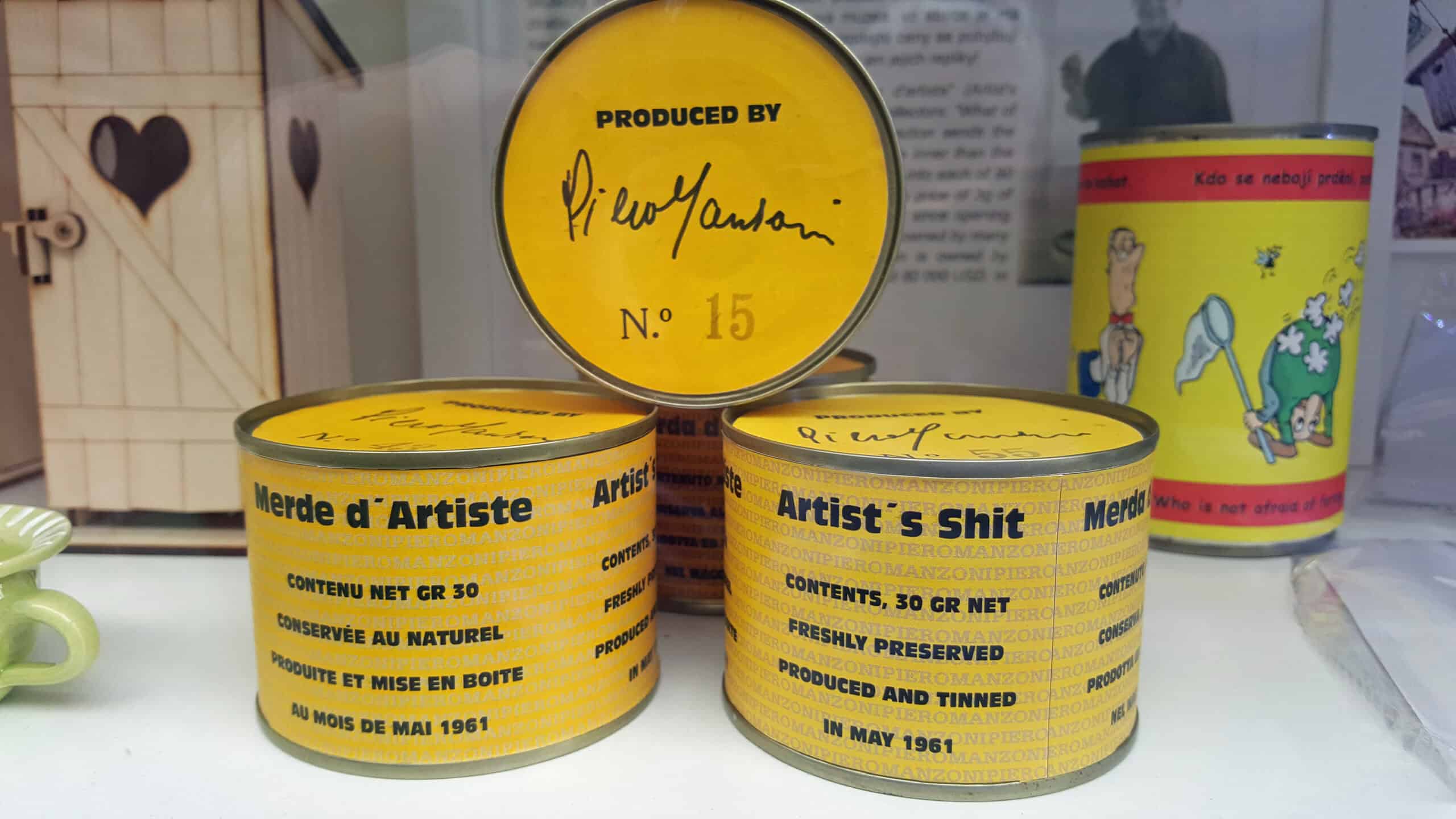
Piero Manzoni created “Artist’s Shit” in 1961. This artwork consists of 90 tin cans, each supposedly containing 30 grams of the artist’s feces. Manzoni intended to challenge the commercialization of art. “Artist’s Shit” is a provocative commentary on the art market. The cans were sold by weight, equivalent to their weight in gold, questioning the value of art and its commodification. Manzoni’s work remains a controversial and thought-provoking piece in contemporary art.
Banksy’s “Girl with Balloon” (Shredded)
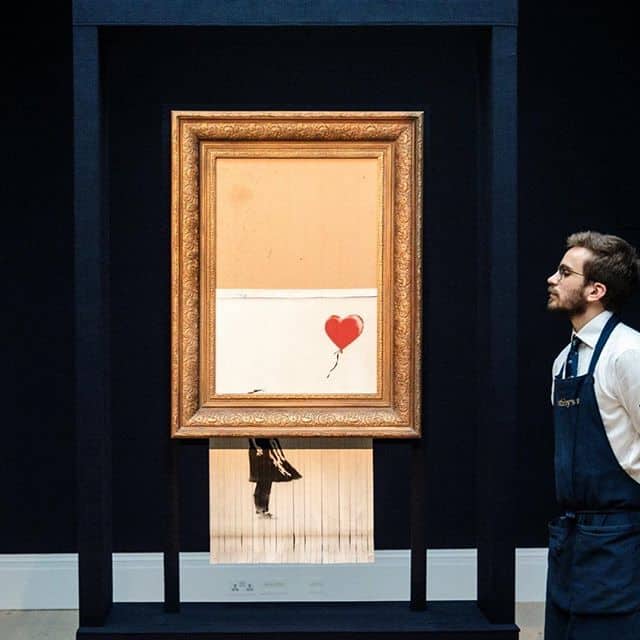
Banksy’s “Girl with Balloon” was originally created in 2002 and famously shredded in 2018 during a Sotheby’s auction. The artwork depicts a young girl reaching for a heart-shaped balloon, symbolizing hope and innocence. During the auction, a hidden shredder in the frame partially destroyed the piece, rechristened as “Love is in the Bin.” This unexpected act questioned the nature of art ownership and authenticity. Banksy’s stunt turned the event into a performance piece, further cementing his reputation as a subversive street artist.
Tracey Emin’s “My Bed”
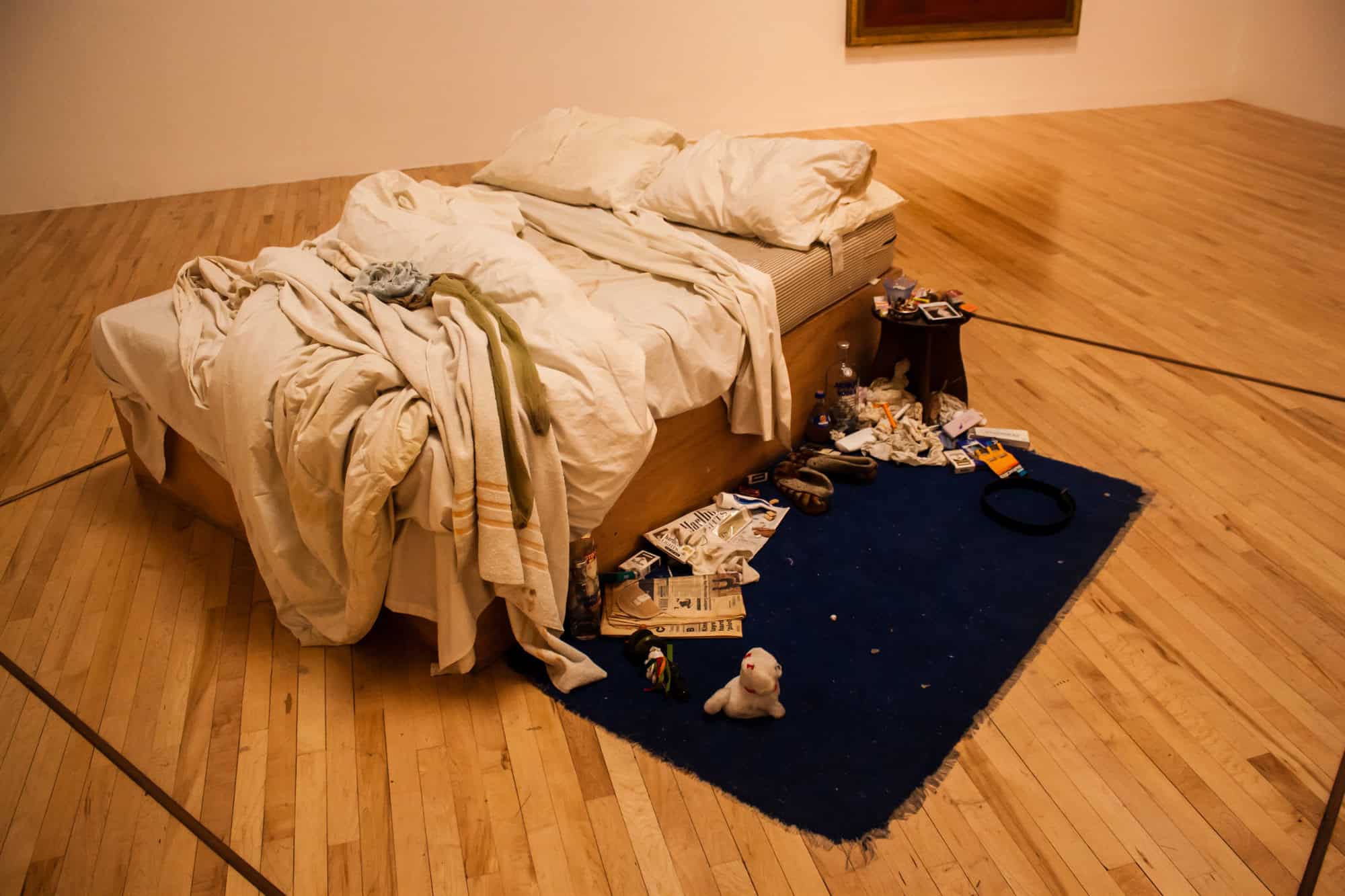
Tracey Emin’s “My Bed” was created in 1998. It features her unmade bed surrounded by personal items like underwear, slippers, and empty vodka bottles. The artwork is an autobiographical representation of a depressive episode. “My Bed” was shortlisted for the Turner Prize, sparking controversy. It provides an intimate look into Emin’s life, blurring the line between art and personal experience. The piece is praised for its raw honesty and emotional impact.
Jeff Koons’ “Balloon Dog”

Jeff Koons created “Balloon Dog” in 1994-2000. This series of large, shiny sculptures mimics the form of a balloon animal. Made from stainless steel with a mirror-finish, the sculptures come in various colors. “Balloon Dog” is celebrated for its playful and monumental presence. It merges high art with popular culture, reflecting Koons’ interest in consumerism and mass production. The artwork’s scale and finish make it an iconic piece in contemporary art.
This article originally appeared on Rarest.org.
More from Rarest.org
1969 Roosevelt Dime Value Guide
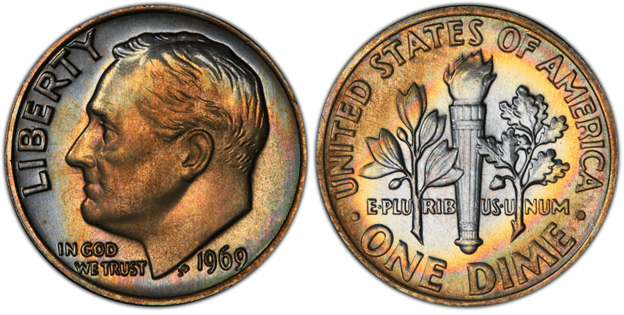
The Roosevelt Dime has acted as a constant reminder of President Franklin D. Roosevelt’s support for the March of Dimes and his efforts to eradicate polio since it first went into circulation in 1946. Read More.
1979 Lincoln Penny Value Guide
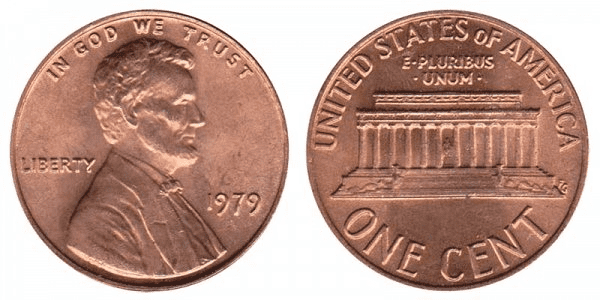
Although not all that common, the 1979 Lincoln Penny is frequently seen in change. The sentimental value of the 1979 penny determines its value, unless it’s a rare error coin. Read More.
1972 Jefferson Nickel Value Guide
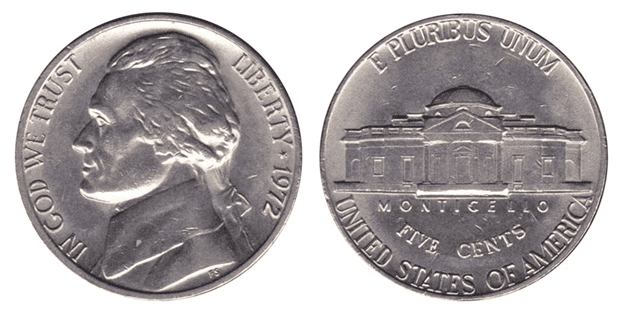
1972 Nickels feature the bust of President Jefferson, and have a 75% Copper, 25% Nickel composition. Read More.
